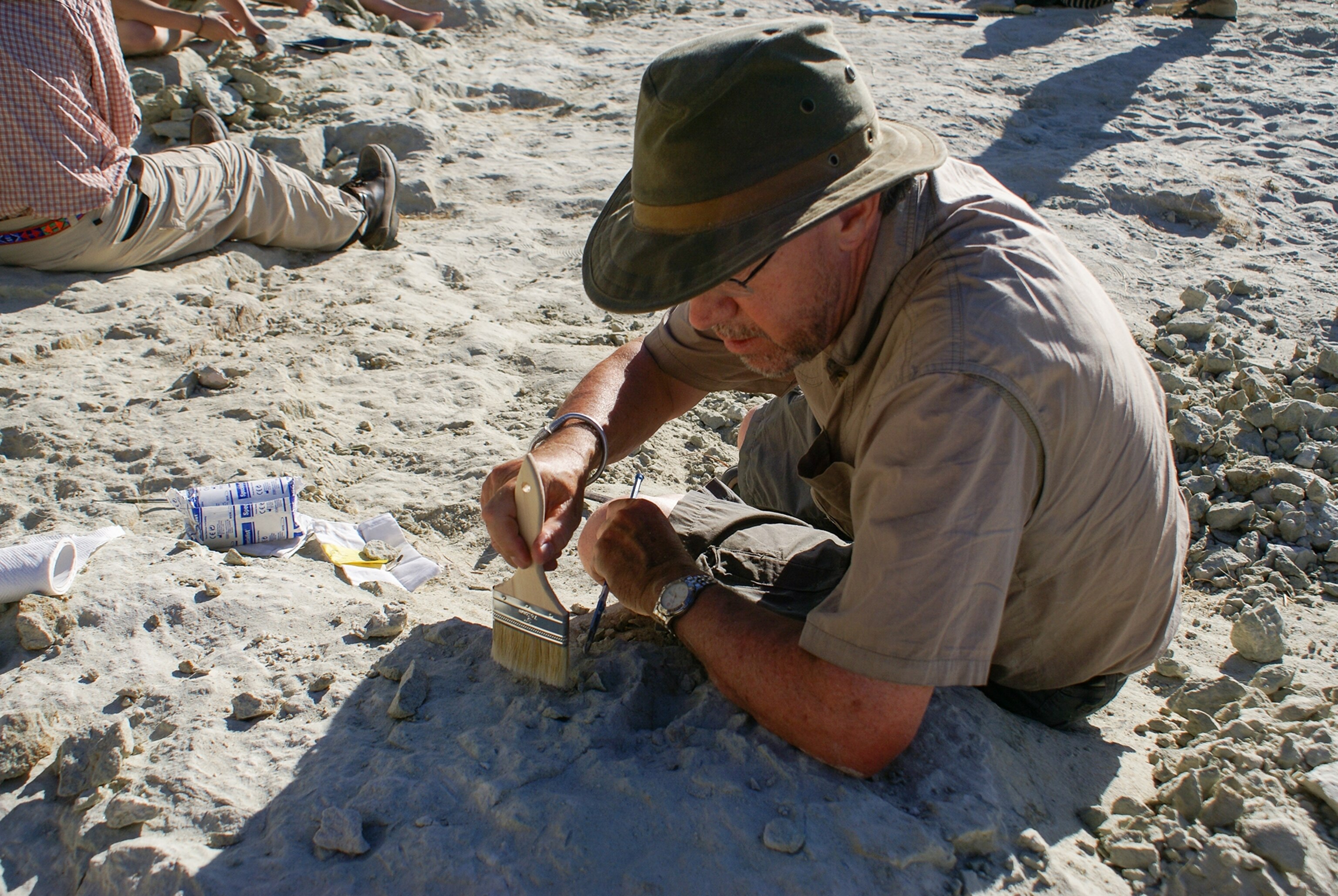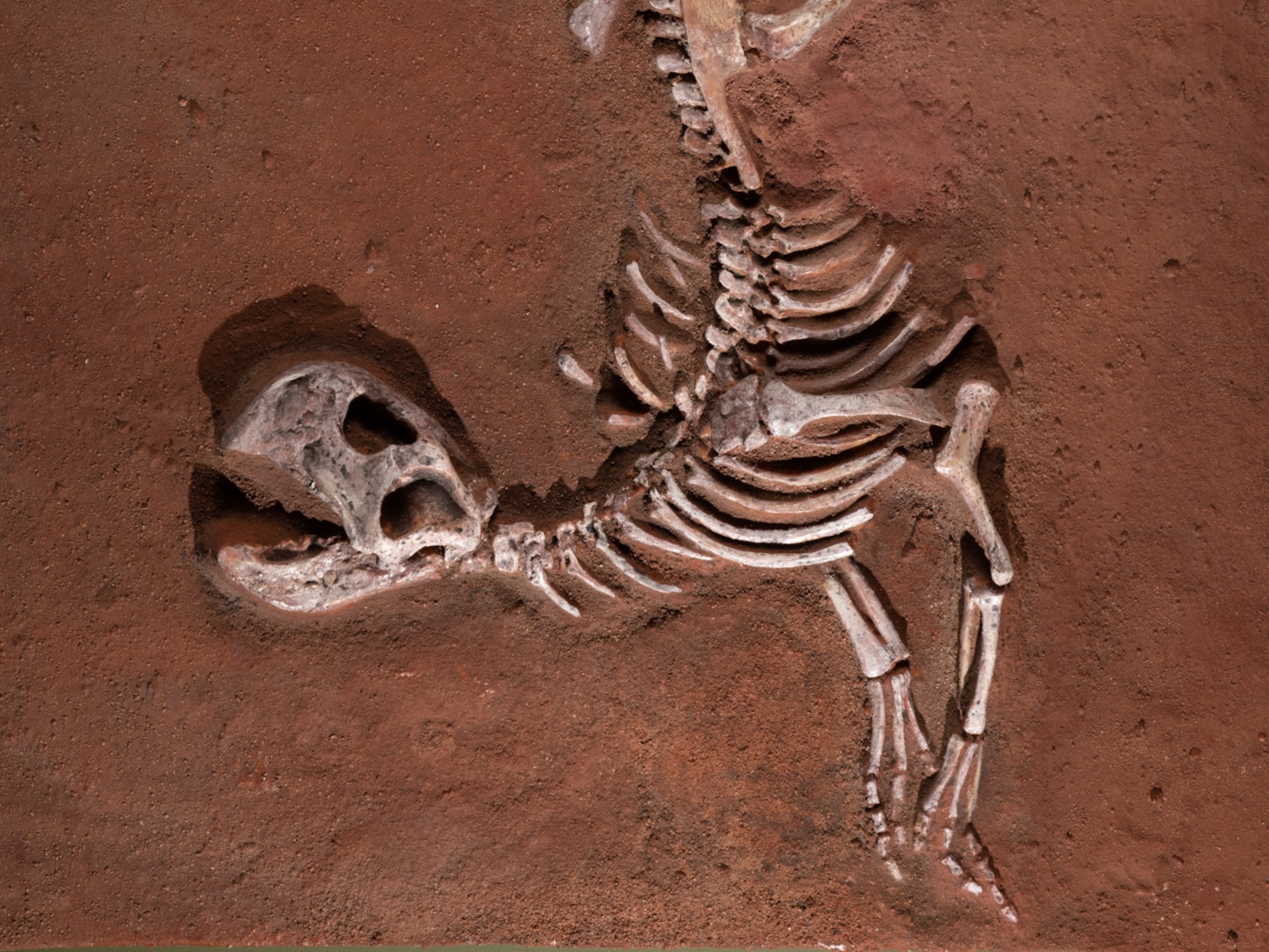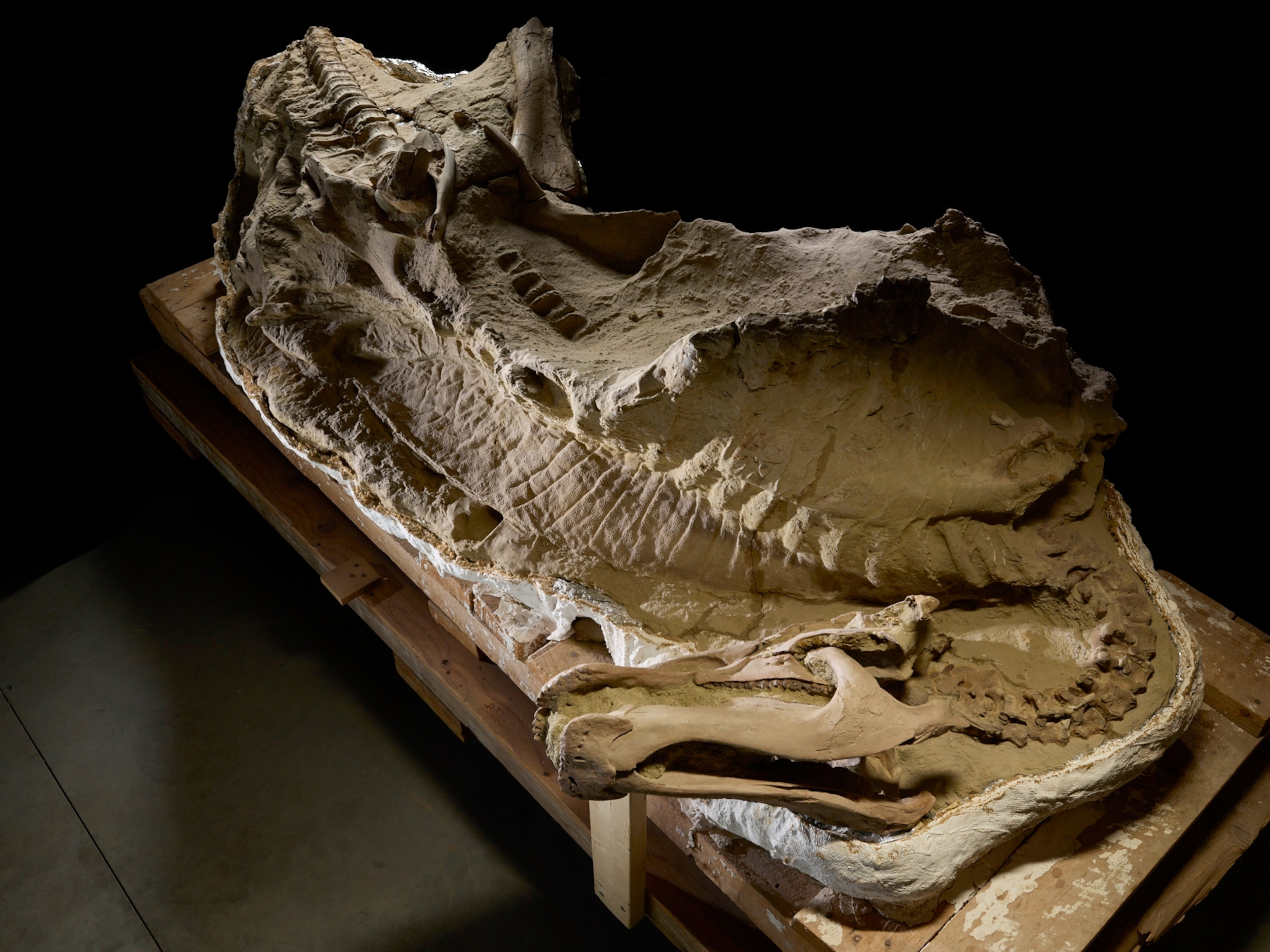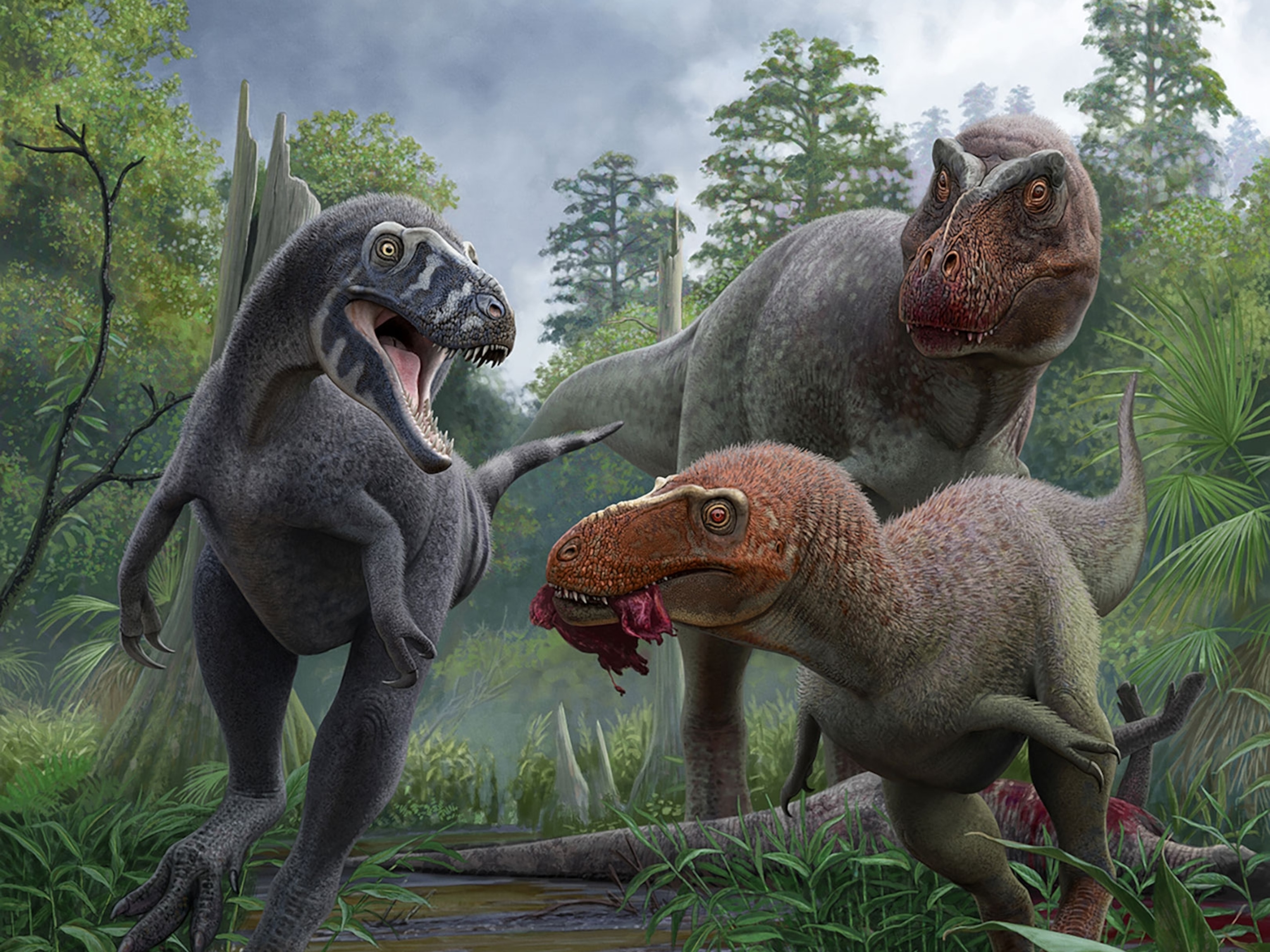
Fossil From Dinosaur Era Reveals Big Mammal With Super Senses
A nearly complete skull, found accidentally, belongs to the enigmatic group of ancient mammals called Gondwanatherians.
Dinosaurs that roamed Madagascar more than 66 million years ago had a most unusual fuzzy mammal living in their shadows—one so large, and with such strange features, that scientists say they could have never predicted its existence.
That is, until 2010, when a team of scientists looking for fish fossils accidentally collected its nearly complete skull from a site along Madagascar's west coast.
Since then, researchers have learned that the groundhog-like critter had supersensory capabilities, with a large portion of its brain devoted to smell, and that it weighed about 20 pounds (9 kilograms)—much more than most mammals alive during the age of the dinosaurs.
"Not only does it have bizarre features, it's bizarre in being so humongous," says vertebrate paleontologist David Krause of Stony Brook University, in New York, who reports the find Wednesday in the journal Nature. Krause compares the critter's appearance to nutria, which are semiaquatic rodents, or an overgrown groundhog. "It's Punxsutawney Phil on steroids," he jokes.
What's more, the lucky find is helping paleontologists fill in the mammalian evolutionary tree, especially during the age of the dinosaurs.

Meeting Vintana
Krause and his colleagues named the creature Vintana sertichi, which combines the Malagasy word for "luck" and the name of Joe Sertich, Krause's then-graduate student. Unbeknownst to Sertich, the skull was inside a 150-pound (68-kilogram) chunk of Madagascan sandstone he brought back to the lab.
Only after scientists CT-scanned the slab did they see the fossil.
"We had absolutely no idea it was there," says Krause, whose work was supported by a grant from the National Geographic Society Committee for Research and Exploration. "Paleontology is sometimes pure serendipity."
It's a wonderfully preserved skull, and exceptionally complete, says vertebrate paleontologist Guillermo Rougier of the University of Louisville, in Kentucky. But the story gets even better.
"It is from this part of the world for which we know nothing," Rougier says. "It is like discovering a new world."
Lost Mammals
Vintana lived in Madagascar's coastal floodplains during the Upper Cretaceous, between 72 million and 66 million years ago. It belongs to an enigmatic, extinct group of Southern Hemisphere mammals known as Gondwanatherians. The group arose on the ancient land mass known as Gondwana, a supercontinent that merged into an even bigger land mass before splitting into today's continents.
"Gondwanatherians were completely unknown 30 years ago," Krause says.
Until now, this group of mammals was represented by a literal handful of teeth and a few jaw fragments. Scientists didn't know anything about the animals or have enough information to place them on the evolutionary tree.
This finding changes all of that.
By analyzing the skull and comparing Vintana with hundreds of other mammals, Krause and his colleagues determined that Gondwanatherians are closely related to a group of mammals known as Multituberculates. Together with a few others, these groups make up a tree branch known as Allotheria, or "other beasts." They're all extinct now, but for more than a hundred million years, Allotheria included some of the most successful, diverse, and long-lasting groups of mammals on Earth.
While the rodent-like Multituberculates mostly lived in the Northern Hemisphere, Gondwanatherians stayed completely in the Southern Hemisphere.
In contrast to the well-studied mammals of North America and Europe, little is known about the southern mammals, though scientists have found "many interesting hints" that the two groups were quite different during the time of the dinosaurs, says paleontologist Zhe-Xi Luo of the University of Chicago.

Supersensory Skull
About 180 million years ago, the supercontinent Gondwana began to break apart, eventually fracturing into Africa, Antarctica, India, Australia, and Madagascar.
By 88 million years ago, Madagascar was an island.
That geographic history helps explain Vintana's strange combination of characteristics, Krause says. Some of the skull's features are ancient, resembling those of reptiles, and are retained from its evolution on the mainland. Others, like the teeth that betray its herbivorous diet, look a lot like other mammalian features of the time.
Yet other features suggest the animal evolved in isolation, such as on an island, which can produce strange lifeforms like the ones still found on Madagascar today.
For starters, the skull's brain case is strangely tilted, and bones at the top of the skull are unusually thick and porous. The huge cheekbone attachments for jaw muscles (called flanges) suggest that Vintana had powerful jaw muscles—the better to tear apart its vegetarian meals with.
Other features suggest Vintana was an overgrown supersensory machine. Its olfactory bulbs—the part of the brain involved in smell—are enormous, making up 14 percent of the brain's overall volume (in contrast, a human's olfactory bulbs occupy 0.01 percent; a dog's, 0.31 percent). Its large eye sockets suggest it was well adapted for seeing in dim light. And the architecture of Vintana's inner ear points not only to sensitive, high-frequency hearing, but also to an active, agile lifestyle.
"It's very interesting and peculiar," Luo says. "The very exotic combination of its skull features are so beyond our previous imagination."
Mystery Mammals
Until scientists find a complete skeleton, many questions remain unanswered: Did Vintana live in trees? Burrows? Was it semiaquatic? Nocturnal? What, exactly, did it eat? Did it lay eggs, like some other mammals?
"I'm dying to find more complete remains of other Gondwanatherian mammals," Krause says.
The story of evolution is one of stops and starts, of successful accidents and many dead ends. But nothing lives and dies in isolation, and the same chapters that included Vintana also featured the creatures that would eventually evolve into whales, bats, cats, and humans.
Follow Nadia Drake on Twitter.








